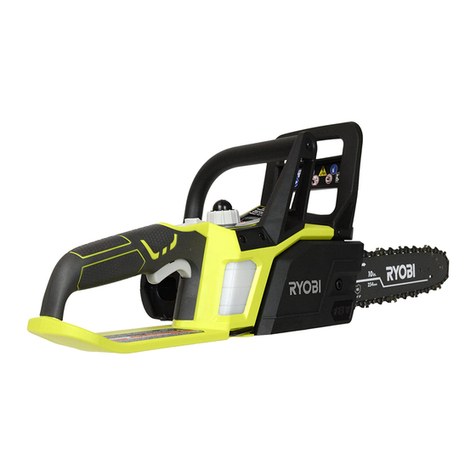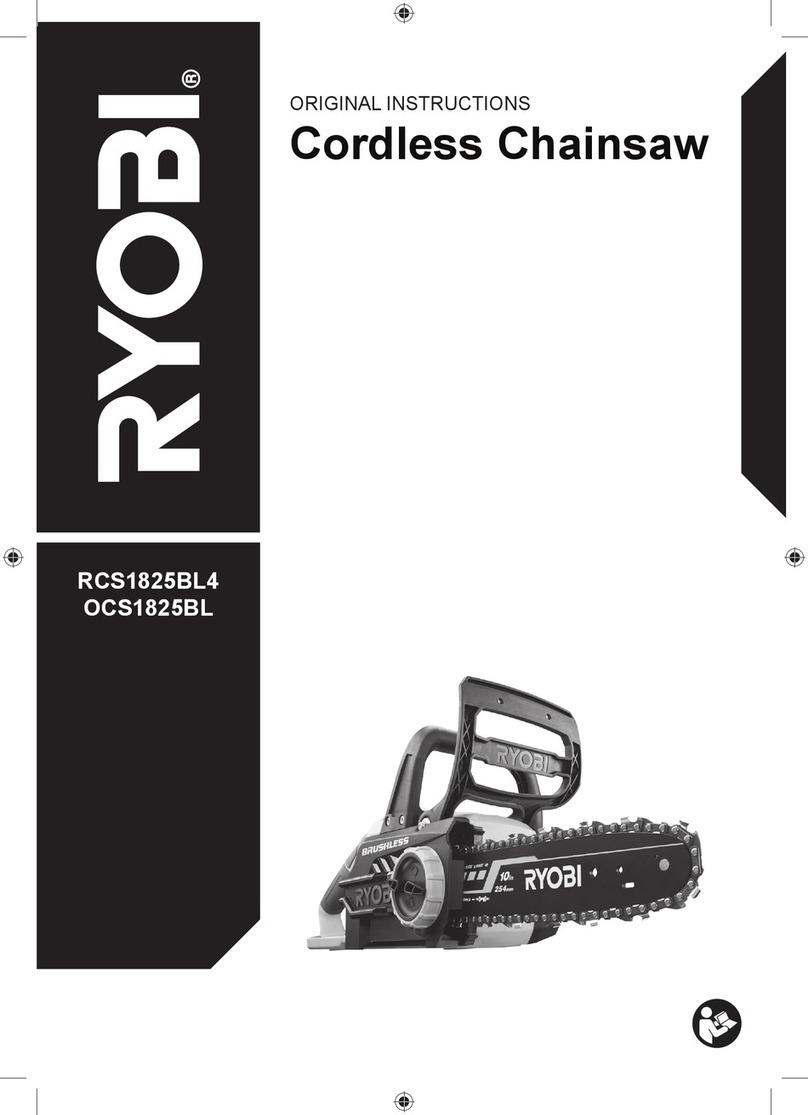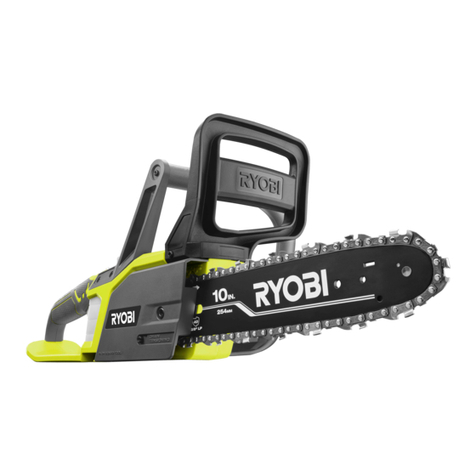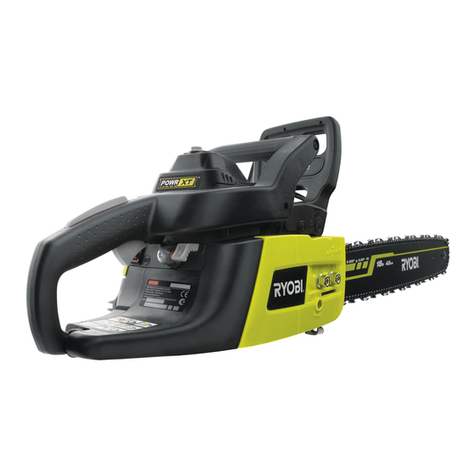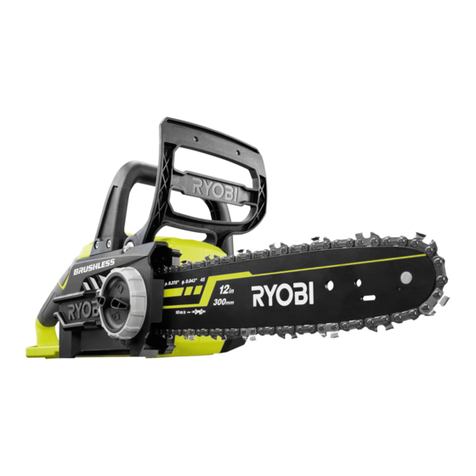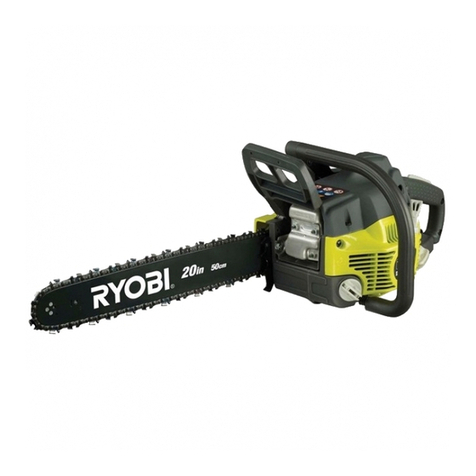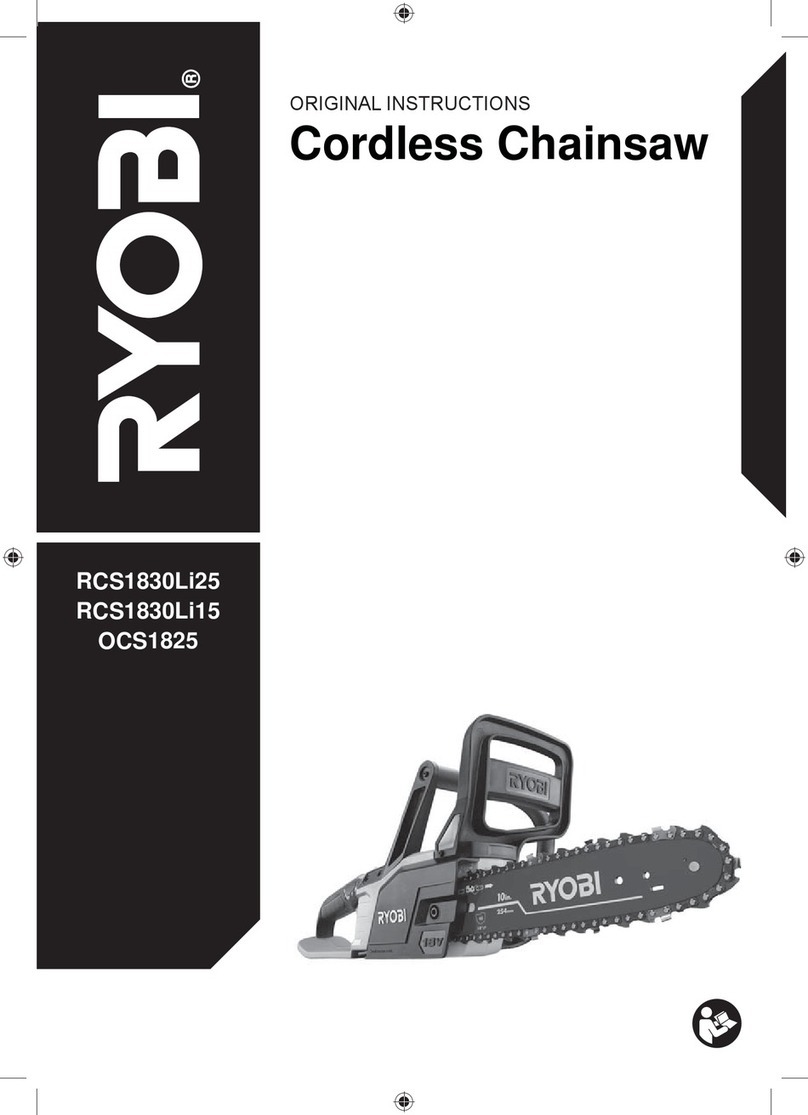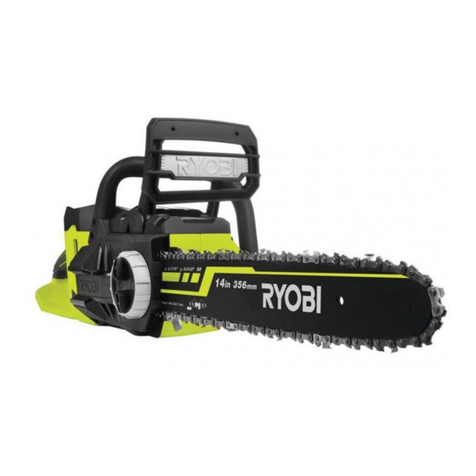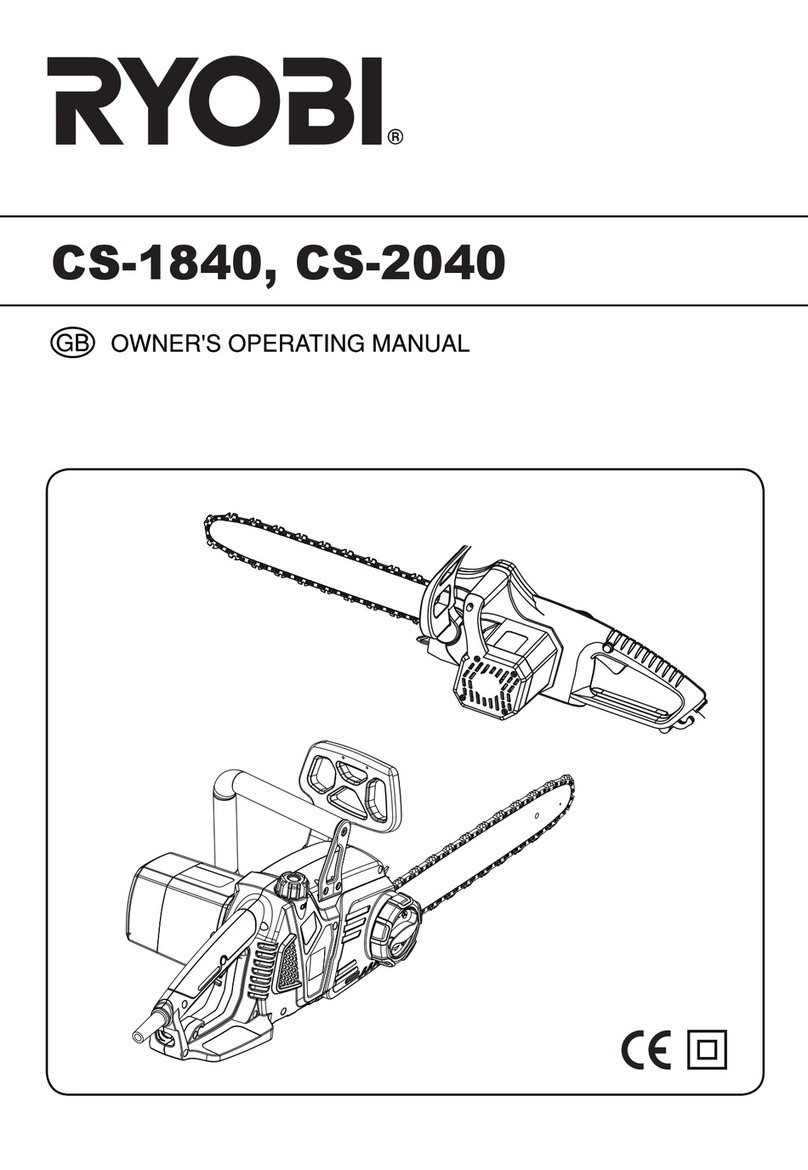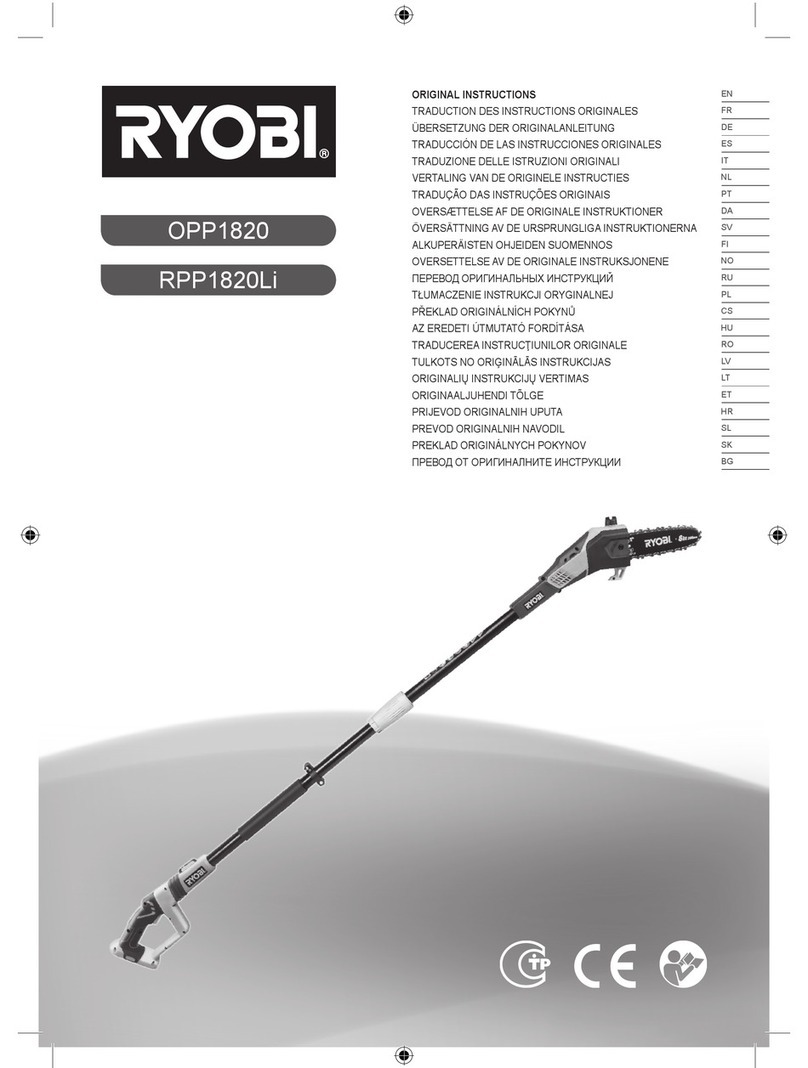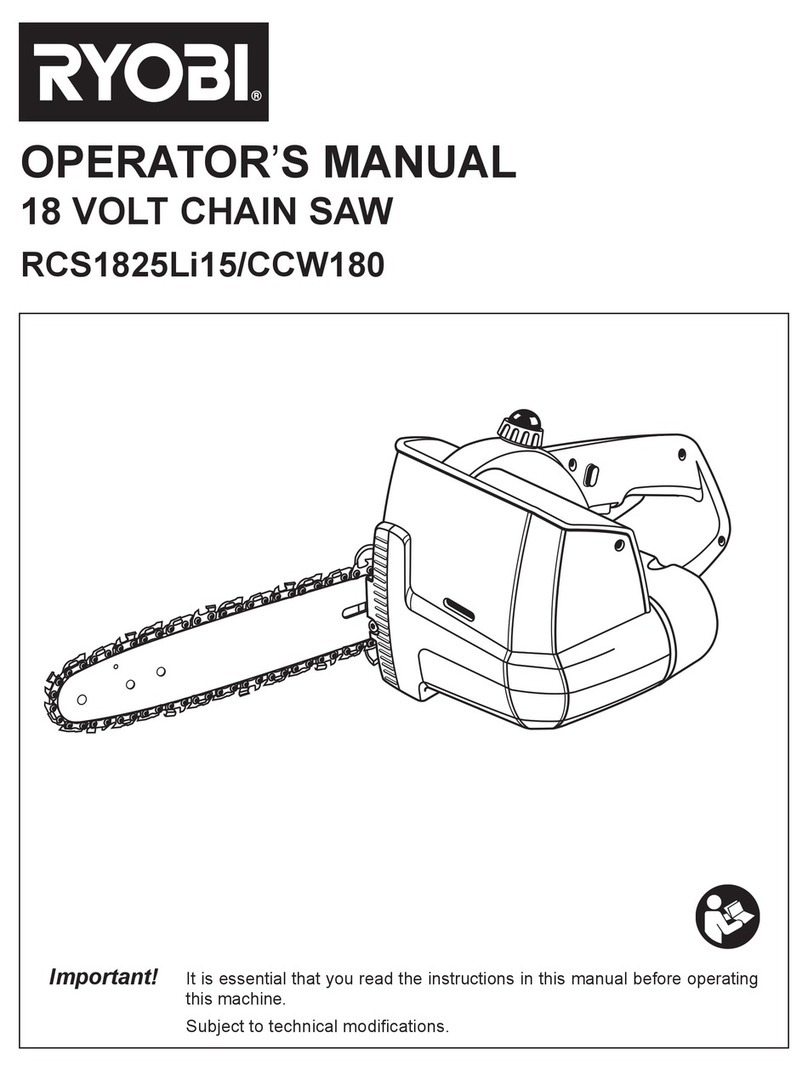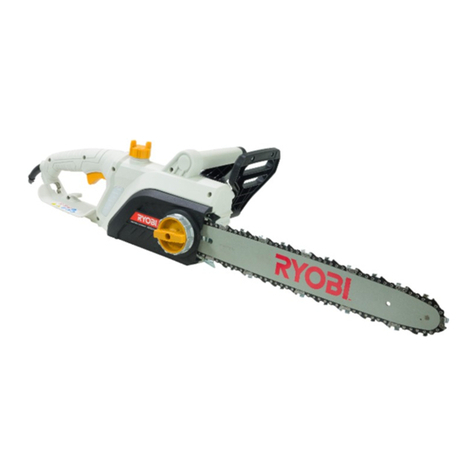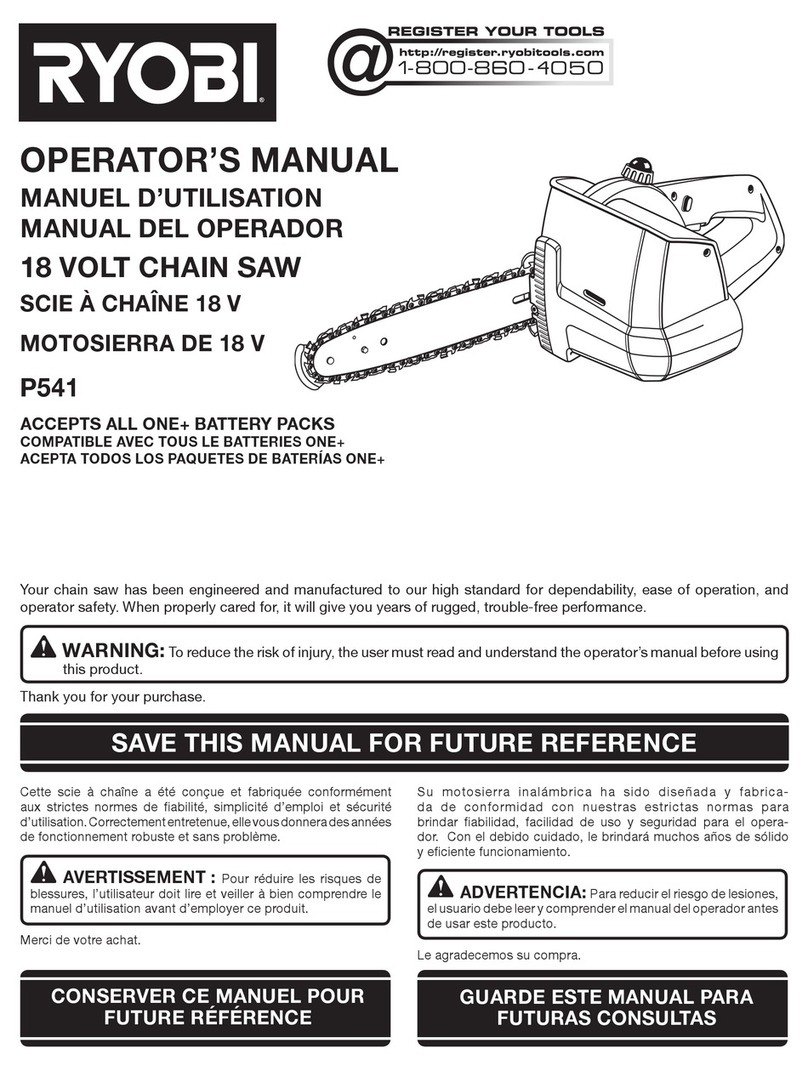
5 – English
placementbarsandchainsmaycausechain
breakageand/orkickback.
Follow the manufacturer’s sharpening and
maintenance instructions for the saw chain.
Decreasingthedepthgaugeheightcanleadto
increased kickback.
Donotstartcuttinguntilyouhaveaclearwork
area,securefooting,andaplannedretreatpath
fromthefallingtree.Clutteredareasinviteac-
cidents.
Keep ALL children, bystanders, visitors, and
animals out of the work area while starting or
cuttingwiththechainsaw.Donotletvisitors
contactchainsaworextensioncord.
Donotoperatechainsawinexplosiveatmo-
spheres,suchasinthepresenceofflamma-
bleliquids,gases,ordust.Chainsawscreate
sparkswhichmayignitethedustorfumes.
DressProperly- Wear snug fitting clothing.
Alwayswearheavy,longpants,longsleeves,
overalls,jeansorchapsmadeofcutresistant
material or ones that contain cut resistant
inserts.Wearnon-slipsafety footwear. Wear
non-slipheavyduty gloves to improve your
gripandtoprotectyourhands.Donotwear
jewelry,shortpants,sandals,orgobarefoot.
Do not wear loose fitting clothing, which could
be drawn into the motor or catch the chain or
underbrush.Securehairsoitisaboveshoulder
level.Wearhearingandheadprotection.
Heavyprotectiveclothingmayincreaseoper-
ator fatigue, which could lead to heat stroke.
Duringweatherthatishotandhumid,heavy
work should be scheduled for early morning
orlateafternoonhourswhentemperaturesare
cooler.
Alwaysweareyeprotectionwithsideshields
markedtocomplywithANSIZ87.1aswellas
headandhearingprotectionwhenoperating
thisequipment.
Alwaysbeawareofwhatyouaredoingwhen
using the chain saw. Use common sense. Do
notoperatethechainsawwhenyouaretired,
ill, or under the influence of alcohol, drugs, or
medication.
Donotexposethechainsawtorain.
Donotusethechainsawindamporwetloca-
tions.
CHAIN SAW SAFETY WARNINGS
Stayalertandpayattentiontowhatyouare
doing. Use common sense when using this unit.
Keepallpartsofyourbodyawayfromthesaw
chain when the unit is running.
Neverletanyoneuseyourchainsawwhohas
notreceivedadequateinstructionsinitsproper
use.Thisappliestorentalsaswellasprivately
owned saws.
Before you start the unit, make sure the saw
chain is not contacting any object.
Stopthechainsawbeforesettingitdown.
Toavoidaccidentalstarting,nevercarrythe
unit with your finger on the switch trigger.
Maintaintheunitwithcare.Keepthecutting
edgesharpandcleanforbestperformanceand
to reduce the risk of injury. Follow instructions
for lubricating and changing accessories.
Donot operate a chain saw with one hand!
Use a firm grip with thumbs and fingers en-
circling the chain saw handles. Serious injury
to the operator, helpers, bystanders, or any
combinationofthesepersonsmayresultfrom
one-handedoperation.Achainsawisintended
for two-handed use.
Guard against electric shock - Avoid body
contact with grounded surfaces such as metal
pipesandwirefences.Thereisanincreased
risk of electric shock if your body is grounded.
Donotoperateachainsawthatisdamaged,
improperly adjusted, or not completely and
securely assembled. Chain should slow to a
stopwhentheswitchtriggerisreleased.Ifthe
chain continues to turn after the switch trigger
hasbeenreleased,havetheunitservicedby
anauthorizedservicecenter.
Checkfordamagedparts.Checkforalignment
ofmovingparts,bindingofmovingparts,break-
ageofparts,mounting,andanyothercondi-
tionsthatmayaffectitsoperation.Aguardor
otherpartthatisdamagedshouldbeproperly
repairedorreplacedbyanauthorizedservice
center unless otherwise indicated elsewhere in
this manual.
Allchainsawservice,otherthantheitemslist-
edintheoperationandmaintenancesections,
shouldbeperformedbyanauthorizedservice
center.
